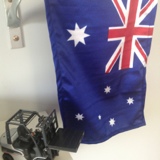Information
-
Document No.
-
Audit Title
-
Client / Site
-
Conducted on
-
Prepared by
-
Location
-
Personnel
-
Description of SafeROAD Program - Safe Work Practices to Observe
Vehicles in Depot
- Three point contact when climbing in / out of vehicle
- Seat belt fastened at all times
- Turn head to check for blind spots before reversing
- Speed limits and yard traffic rules observed at all times
- Back doors closed and secured on departure from depot (with lock in place)
- Trailers to be connected as per site procedures. Vehicles to remain stationery during the load / unload process
Manual Tasks
- Warm up exercises carried out daily
- Check the load / item before lifting
- Freight to be held close to the body when lifting / lowering / carrying
- Move feet to avoid twisting the back
- Controlled movements when handling freight (no throwing or swinging)
- Two person lift carried out for awkward or heavy freight
- Use safety step to work at heights (no standing on freight or conveyers)
- Use lifting devices available in depot eg. Hand trolley, pallet jack
Forklift & Scooter Operations
- Daily per-operational checklist completed
- Seatbelt to be worn at all times
- All parts of the body inside forklift & scooter at all times
- Look before moving / reversing
- No eating / drinking / speaking on mobile phone or listening to personal listening device while operating a forklift or scooter
- Travel within the depot speed limit at all times, adjust speed when in vicinity of pedestrians, congested and high traffic areas
- Travel with tines as low as possible
Maintain a safe distance when travelling near other vehicles in depot
- Smooth and controlled movements (up/down/tilt/side shift)
- No more than one movement at a time while travelling eg. lowering load and reversing
- No shunting freight or equipment along the ground
Machinery / Equipment
- No standing / sitting / lying on or jumping over conveyers whilst in operation
- No loose clothing or long hair or chains around conveyers. Long hair must be tied back
- No employee is to operate any piece of plant or equipment without a license and / or training
- Machinery / Equipment is right for the job, used correctly and in good working order
- Unsafe equipment must be tagged out
Personal Protective Equipment (PPE)
- Safety vests or shirts to be worn at all times in areas with forklifts and other vehicles (unless identified as a hazard following a risk assessments)
- Covered and suitable shoes must be worn in the depot
- Ear protection to be worn where indicated
- Eye protection to be worn where indicated
- Sunscreen / hat to be worn when working outdoors under the sun
Housekeeping & Site Safety Rules
- Emergency exits / fire fighting equipment and walkways to be clear at all times
- Work area neat and tidy
- Pedestrians must use designated walkways
- Pedestrians have right of way at all times
- No jumping off docks or vehicles
- No tampering with speed governors on vehicles
- No standing on forklift tines
- No personal entertainment equipment to be used in the depot
- No skylarking or horseplay behaviour in the depot -
DETAILS
-
Date of Interaction:
-
Facility / Location
-
Observation:
- Onsite
- Offsite
-
POTENTIAL SEVERITY (tick the most applicable)
- Minor
- Serious (LTI)
- Fatal
-
OBSERVATION CATEGORY (tick the most applicable)
- Vehicles in depot
- Manual Tasks
- Forklift & Scooter Operations
- Machinery & Equipment
- Personal Protective Equipment
- Housekeeping & Orderliness
-
DESCRIPTION OF ACT OR CONDITION (include name of staff involved)
-
SAFE/UNSAFE? (tick the most applicable)
-
RESULT OF SAFETY INTERACTION: If unsafe act, what was agreed? Elicit other safety discussions














